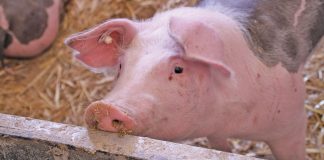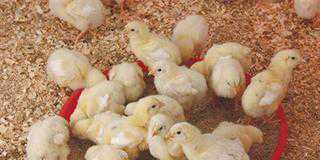Before giving an injection, make sure you know how a syringe works. A syringe is a piston pump consisting of a plunger that fits tightly in a tube, called a barrel. The plunger can be pulled and pushed inside the barrel, allowing the syringe to take in and expel, or “inject”, a liquid through a needle fitted to the open end of the tube.
There are measurements around the barrel to show how much medicine you’ll be injecting. These measurements also help to get medicine out of the bottle. If injecting a 5mâ„“ dose, draw air into the syringe by pulling out the plunger until the bottom reaches the 5mâ„“ mark. Now slip the needle into the top of the bottle and “inject” the air into the bottle. Next, draw out the amount of medicine needed.
You need to inject the same amount of air into the bottle as you’ll be taking out. This will make it easier to withdraw the liquid.After filling the syringe, point it upwards and tap the barrel with your finger to force the air bubbles up towards the needle. Then slowly and carefully push the plunger to force the air bubbles out through the needle. It’s OK if a little of the liquid squirts out – the important thing is to get rid of those air bubbles!
Intramuscular injections (IM)
These involve injecting the medicine into the muscles. You’ll need a needle long enough to pierce the skin, subcutaneous tissue (the stuff just underneath the skin) and fat to reach the muscle. Choose muscle tissue that’s of less value to consumers. In cattle, for example, IM injections are usually given in the neck area instead of the hip.The injection must be given deep into the muscle and the needle should enter the skin perpendicular to the skin surface.
Think of a capital “T”. The long downward stem is perpendicular. In other words, the needle must enter the skin “straight” and not at an angle. First insert the needle, then attach the syringe. Check that the needle isn’t in a blood vessel by pulling back on the plunger and looking for blood flow in the tip of the syringe. If you see blood, remove the needle and insert it in a different site.
Subcutaneous injections (SQ)
If the product label says it’s OK to administer the medicine by an IM or SQ injection, choose the SQ route. You’ll need a needle about 2,5cm long:Give SQ injections halfway up the neck in front of the shoulder, or over the ribs well behind the shoulder.With cattle, lift a fold of skin to make a “tent”. Insert the needle through one side of the tent at an angle of 45º. With pigs it won’t be possible to make a “tent”, so slide the needle under the skin at an angle of about 30º.
Intravenous injections (IV)
IV injections involve injecting directly into a vein and usually require a drip, which allows medicine to enter the vein at a set rate. It’s a specialised technique that requires expertise and practice, so you’ll need a vet to do this.
Multiple injections
Choose different injection sites on the body, for example, the opposite sides of the neck, when repeating treatments over a number of days. Alternatively, place repeat injections at least one hand-width from a previous injection site.Finally, always follow the instructions on the label – and if in doubt, call a vet!












